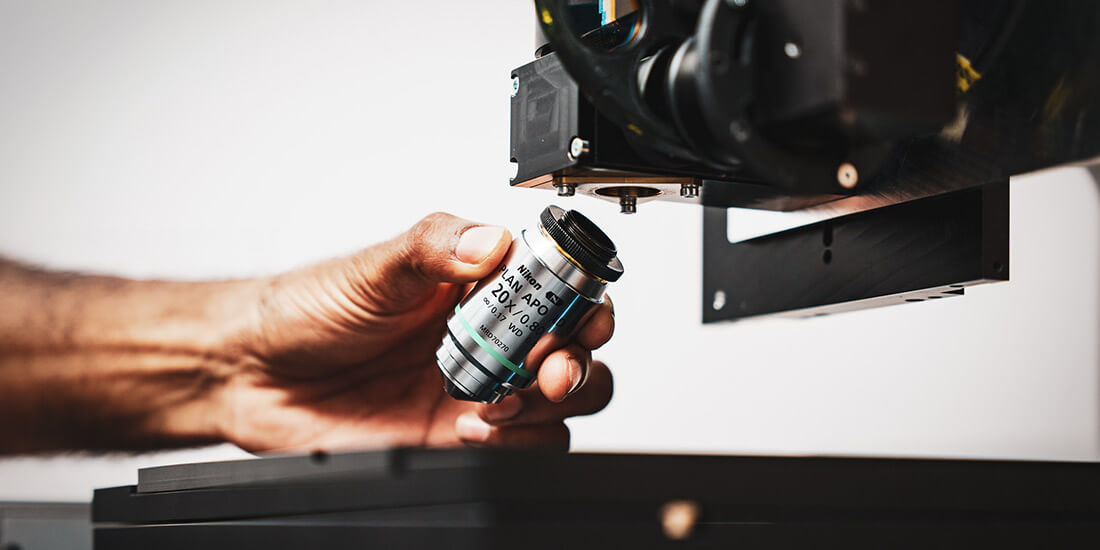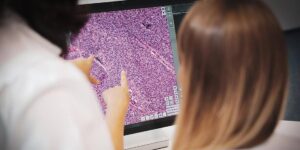Synopsis
Magnification and resolution are the two sides of the same coin in digital pathology. As a pathologist, you might have often come across situations where the quality of a specimen stops you from achieving a quick and accurate diagnosis. During those testing times, access to digital images would have made the desired difference with magnification and resolution. Magnification and resolution play a critical role in digital pathology experience. Their level of interplay ensures clarity, detail, and quality of the digital images – the better the balance between the two, the better the output of the image. Today is the time to examine the significance of magnification and resolution in digital pathology and shed light on their harmonious interaction.
Merging of Technology and Medicine
The amalgamation of technology into medicine has taken the medical diagnosis and research field to new heights. On the way, the examination of tissue samples and the diagnosis-making process has become more quality-oriented. The basic requirement for implementing digital pathology systems is to carefully consider factors like image resolution quality and scanning capabilities, as these can affect your results. At the core of these systems lies a captivating and intricate relationship between magnification and resolution.
What is Magnification?
Magnification refers to the degree to which an image can be enlarged. In digital pathology, it provides a clear and detailed view of tissue samples enabling you to identify abnormalities like cancerous cells faster and make precise diagnoses. Optical and digital methods are used to achieve the desired magnification. Optical magnification is the traditional method. It uses a microscope that works with different objective lenses. You interchange the objective lenses to achieve various levels of magnification. As the name suggests, digital magnification works digitally. You zoom -in and -out on a high-resolution digital image of the specimen to get the required magnification.
What is Resolution?
Resolution is the ability of a digital pathology system to distinguish between fine details and structures within an image. It is typically measured in pixels per unit area (PPI). Higher resolution means that more pixels are packed into each unit area. Thus, the resulting image is a sharper and more detailed one. In a nutshell, resolution determines how well the system can reproduce fine structures, such as cellular morphology, within a tissue specimen.
What Is a Numerical Aperture?
Numerical aperture (NA) is a fundamental concept in microscopy, which is crucial in setting the resolving power of optical imaging systems. It serves as a quantitative measure of the ability of an optical system, modeled by the objective lens of a microscope. It aims to capture and distinguish intricate features within a specimen. A higher NA provides better resolution by enabling the lens to capture a wider range of spatial frequencies from the sample, thus revealing finer and more complex details.
The Interplay Between Magnification and Resolution
Magnification and resolution are intertwined. Resolution limits how much an image can be enhanced while increasing clarity and detail. If the resolution isn’t enough, the image will start to deteriorate as you zoom in and fine details will be lost. This can have serious implications for diagnostic accuracy and research.
Importance in Clinical Diagnosis
In clinical pathology, the relationship between magnification and resolution will always be important. A high-resolution digital image is a core requirement for tissue analysis. For example, in cancer diagnosis, you need to scrutinize and analyze the shape and size of individual cells in a tissue sample to accurately identify the stage and type of cancer. Achieving this detailed analysis requires you to have a balance between magnification and resolution.
Role in Telepathology
Telepathology is all about practicing pathology from a distance. As a result, it relies on high-resolution images to ensure accurate diagnosis when you are away from the specimen. In remote setups, the digital pathology system must offer clear and intricate images that can be transmitted across networks without compromising the essential information. High-resolution images can only be achieved through accurate magnification.
Impact on Pathology Research
The role of digital pathology systems extends beyond clinical diagnosis to critical roles in research and development. Researchers use tissue samples for a variety of purposes, such as isolating disease pathways, testing new drugs, and developing new therapeutic approaches. In these complex research environments, a high-quality image is a basic requirement. Pathologists often must scale to gain important practical insights during their research activities. In such cases, the system’s seamless integration of magnification and resolution can delineate the boundary between a groundbreaking discovery and a missed opportunity.
Conclusion
The relationship between magnification and resolution is critical in modern digital pathology practice. The perfect coordination of magnification and resolution contributes to speed, efficiency, and accuracy. Magnification refers to the extent to which an image can be magnified, and it plays an important role in digital pathology. Meanwhile, another equally crucial element is resolution, the power to distinguish fine details. When magnification and resolution gel together, a powerful trick emerges. The right mix of magnification and resolution facilitates access to optimal diagnosis and testing, which benefits all laboratories, physicians, and ultimately patients. The interplay of these factors assumes utmost significance, particularly in clinical diagnostics and research.











